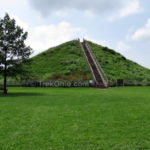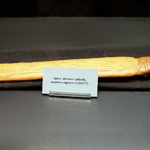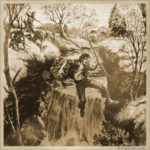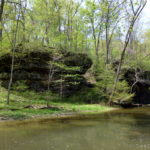What’s known as the “Mound City Group” is part of the Hopewell Culture National Historical Park in Ross County, Ohio. This land was used for funeral rituals by a Native American civilization that flourished between 200 B.C. and 500 A.D. Mound City is approximately 13 acres in size. A low earthen wall about 3 to 4 feet high (1 to 1.3 meters) lies around the perimeter; it’s shape is that of a square with rounded corners. Perhaps the builders of the Mound City thought of the wall as a “sacred enclosure” separating the land of the departed from the land of the living.
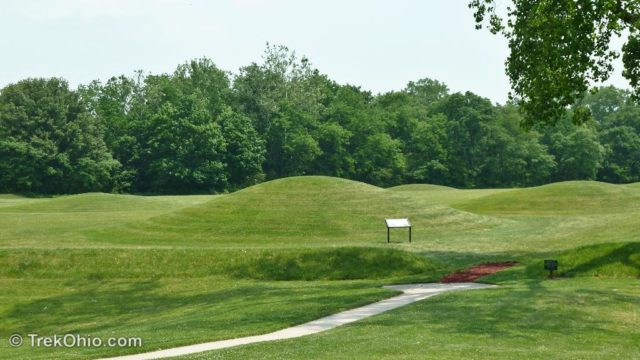
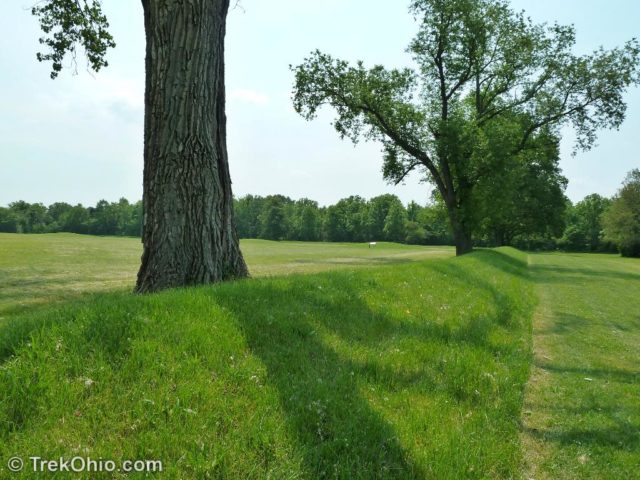
Inside this enclosure are at least 23 mounds, the largest of which is 17.5 feet high (5.3 meters) and 90 feet in diameter (27.4 meters.).
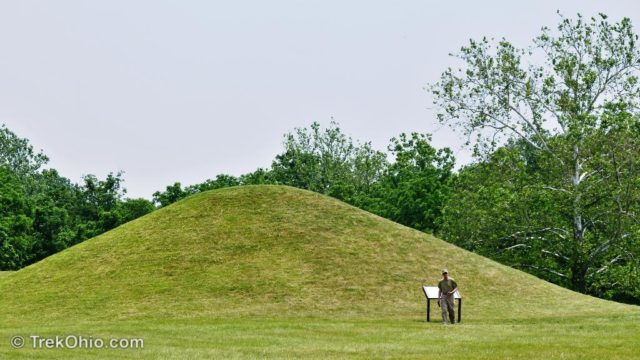
Most of the mounds are circular domes, but one is oblong.
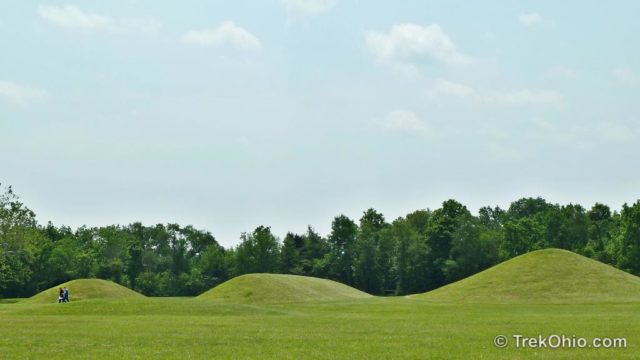
This site was apparently used for elaborate funeral rituals. At the location of each mound there was once a wooden house; this was discerned from latent post holes. The houses were constructed in an oblong shape with the longest sides having a double wall, and the short ends having doorways. The park service marked out the site of one such house, minus the mound.
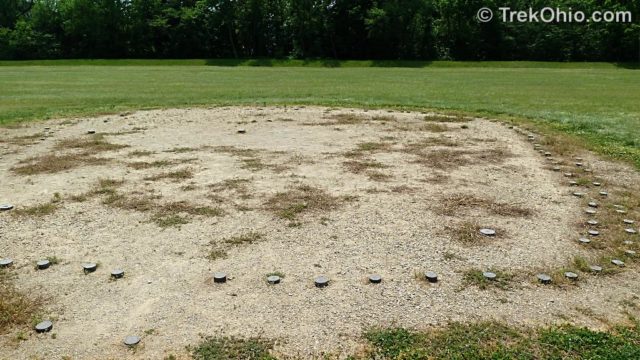
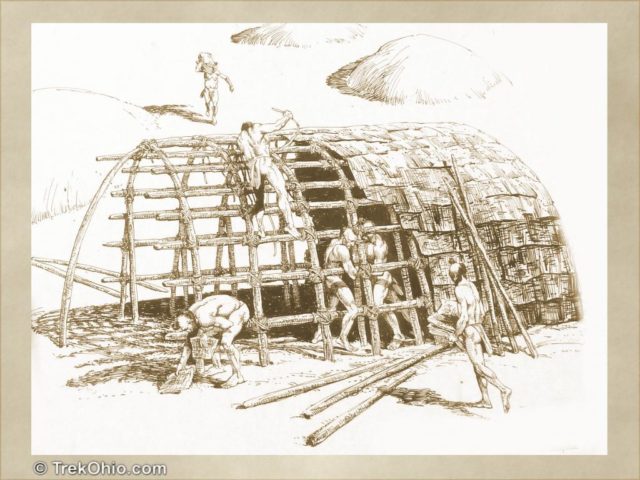
that depicted the construction of the charnel house.
Funeral rites occurred at this site, and perhaps even the cremation of the deceased. Archeologists think that a feast or similar, ceremonial observance may have taken place at the house in honor of the deceased. However at some point following the funeral rites, the house disappears. Archeologists think either the house was disassembled or perhaps that the house was burned to the ground during the crematory rites.
After the cremation, these Native Americans began constructing a mound where the charnel house once stood. Although it may look like a large, but simple mound of earth, the builders involved apparently followed certain guidelines as to what sort of earth to use, and they alternated different materials so that distinct layers were formed. Below is a photo of an illustration that shows a cross-section of one the mounds.
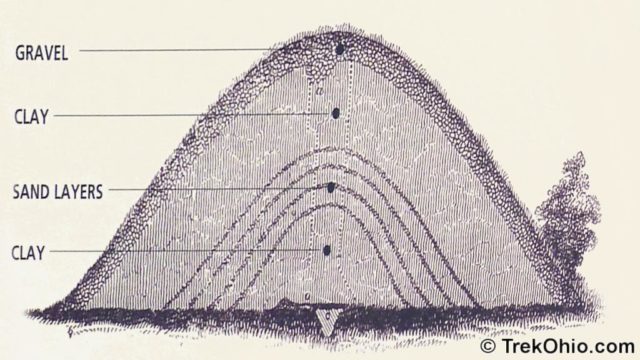
Apparently the site where the dead was laid is immediately covered with a small dome of clay. Then various treasures are interred with the remains, such as jewelry, effigy pipes, pottery, etc. I have posted photo of some of the items that were excavated from Mound City in my previous post, Native American Artifacts housed at Hopewell Culture National Historical Park. One of the staff members explained that most such items were purposely broken prior to being buried. Maybe there was symbolism in this breakage. Maybe it was meant to discourage grave robbing. It would be hard to learn the true purpose at this point.
Surprisingly all but the largest mound had nearly disappeared during World War I. That was because a military camp (Camp Sherman) was based right on top of Mound City. Although the largest mound was spared, most of the other mounds were either leveled or experienced significant damage as gas, water and sewer lines were laid for the camp. So with the exception of the largest mound, when you see the mounds at Mound City for the most part you are not seeing the direct handiwork of the Native Americans.
In 1923 President Warren G. Harding (a native Ohioan) declared Mound City to be a National Monument, and its reconstruction began shortly afterwards. Using maps of the mounds that were made by Edwin Hamilton Davis and Ephraim George Squirer in 1848, plus detective work by archeologists in locating the post holes of the charnel houses, the mounds were restored. In 1946 Mound City became part of the National Park Service.
Although the museum inside the visitor’s center at the park displays a small portion of the artifacts disinterred from Mound City, many of the finest artifacts have been spirited away to distant museums. Some were excavated in the 1800’s for the British Museum (Andy Niekamp II has published photos of some of the British Museum’s Hopewell artefacts at his site). The staff at the Hopewell Culture National Historical Park also told us that many artifacts were taken away to be exhibited at the 1893 Chicago World’s Fair where they were a big hit. Some of these are now on exhibit at the Peabody Museum of Harvard. Others ended up at Chicago’s Field Museum (some of these can be seen at the Field Museum web site).
Besides housing a small museum, the visitor center has a theater where we watched an interesting film about the Hopewell culture and the mounds. In addition the two staff members were extremely knowledgable and shared some interesting facts with us.
Additional information
- Mound City Group published by Ohio History Central
- Hopewell Culture National Historical Park published by Wikipedia
- Mound City Group published by the National Park Service
- The Ancient Americas published by the Field Museum of Chicago.
- Anthro students get their hands dirty at Hopewell site published by Bloomsburg University of Pennsylvania’s College of Liberal Arts
Location
More on Native American History
